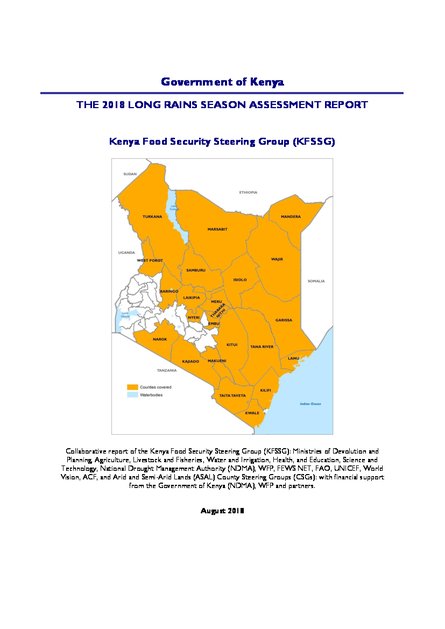
Although the pastoral northeast (Garissa, Wajir, Mandera and parts of Tana River counties) and pastoral north-west (Mainly Turkana, West Pokot and Marsabit) are generally classified as Stressed under the Integrated Food Security Phase Classification (IPC), there are about 700,000 people here in the Crisis phase of food insecurity. After two to three poor seasons, these households have not fully recovered. Most of them lost productive assets during last year’s drought and face considerable food gaps. They will need food and non-food transfers to continue supporting their recovery as the situation stabilizes.
Of the total population in the Arid and Semi Arid regions (ASALs) of Kenya, approximately 9.5 million are in the Minimal/None phase of food insecurity and 3.7 million people in the Stressed phase.
According to preliminary projections by the State Department of Agriculture, the 2018 – 2019 crop production is projected to be approximately 33 percent above the long-term average. This significant increase in production is credited to enhanced rainfall, increased crop yield and reduced effects of the Fall Armyworm as the heavy rainfall mitigated their growth and reproduction.